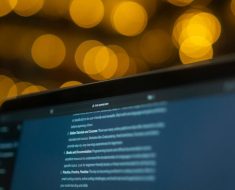In today’s fast-paced world, where ideas and processes are more complex than ever, the need for clear and effective communication tools is paramount. Enter AI flowcharts, a revolutionary way to transform abstract concepts into concrete, visual representations. These AI-driven tools simplify the process of creating flowcharts, making it easier for anyone to map out ideas, workflows, and processes with precision and clarity1,2.
The Evolution of Flowchart Creation


Traditionally, creating flowcharts was a manual task, often requiring meticulous attention to detail and a significant amount of time. Designers had to draw each shape, align elements, and ensure consistency throughout the diagram. This process was not only labor-intensive but also prone to human error, especially when dealing with complex scenarios. However, the advent of AI has changed the landscape of flowchart creation, offering tools that automate and streamline this process3,4.AI flowcharts leverage advanced algorithms to analyze data and generate diagrams that are both accurate and visually appealing. These tools can automatically suggest shapes, align elements, and even predict the next steps in a process, significantly reducing the time and effort required to create comprehensive flowcharts5.
How AI Simplifies Flowchart Creation


AI flowchart tools are designed to make the process of turning ideas into diagrams as straightforward as possible. Here’s how they achieve this:
- Automatic Generation: AI tools can generate flowcharts from textual descriptions or prompts. This means you can simply describe your process, and the AI will create a flowchart that accurately represents your ideas1.
- Precision and Clarity: AI algorithms ensure that the flowcharts are precise and clear. They minimize errors commonly associated with manual diagramming, such as misplacement of symbols or incorrect sequencing of steps2.
- Customization and Adaptability: AI flowchart tools offer a range of customization options, allowing users to tailor diagrams to their specific needs. You can adjust colors, fonts, and layouts to enhance readability and appeal3.
- Real-Time Collaboration: Many AI flowchart tools support collaborative features, enabling multiple users to work on a diagram simultaneously. This is particularly valuable in remote work environments, where team members can provide real-time feedback and make adjustments on the fly4.
Benefits of Using AI Flowcharts


The integration of AI in flowchart creation brings several benefits that enhance productivity and efficiency:
- Time-Saving: AI drastically reduces the time needed to create flowcharts. With features like auto-alignment and instant shape suggestions, users can produce detailed diagrams in minutes rather than hours5.
- Enhanced Communication: Flowcharts serve as a universal language, bridging communication gaps between different departments or disciplines. AI-generated flowcharts are particularly effective in conveying complex ideas in a simple, visual format1.
- Improved Decision-Making: By providing a clear visual representation of processes, AI flowcharts aid in decision-making. They help identify bottlenecks, inefficiencies, or potential issues, allowing teams to optimize workflows and improve efficiency2.
Practical Applications of AI Flowcharts


AI flowcharts are versatile tools used across various industries and applications. Here are a few examples of how they can be applied:
- Business Process Modeling: In business settings, AI flowcharts are used to model and analyze complex processes, such as order fulfillment or customer service workflows. They help teams identify areas for improvement and streamline operations3.
- Software Development: Programmers use flowcharts to map out code logic, outlining different paths and conditions that determine a program’s behavior. AI flowcharts simplify this process, making it easier to visualize and communicate code structure4.
- Education and Training: Educators use flowcharts to break down complex concepts into manageable steps, making them easier for students to understand and remember. AI tools can generate educational flowcharts quickly, saving teachers valuable time5.
Choosing the Right AI Flowchart Tool


With numerous AI flowchart tools available, it’s essential to choose one that meets your specific needs. Consider the following factors when selecting a tool:
- Ease of Use: Look for tools with intuitive interfaces and simple drag-and-drop functionality, especially if you’re not tech-savvy1.
- Customization Options: Ensure the tool offers a range of customization features to tailor the flowchart to your preferences2.
- Collaboration Features: If you work in a team, opt for tools that support real-time collaboration and feedback3.
- Integration Capabilities: Some AI flowchart tools integrate with other software applications, allowing for seamless workflow integration4.
Conclusion
AI flowcharts have transformed the way we create and use diagrams, making the process faster, more accurate, and more accessible to everyone. By automating the creation of flowcharts, AI tools free up valuable time and resources, allowing you to focus on what truly matters—developing and communicating your ideas effectively. Whether you’re a business professional, a programmer, or an educator, AI flowcharts offer a powerful solution for visualizing and optimizing your processes. As AI technology continues to evolve, we can expect even more innovative features that will further enhance the capabilities of flowchart creation tools5.
Sources:
2. Flowster
3. Jeda.ai
Please note, that the author may have used some AI technology to create the content on this website. But please remember, this is a general disclaimer: the author can’t take the blame for any mistakes or missing info. All the content is aimed to be helpful and informative, but it’s provided ‘as is’ with no promises of being complete, accurate, or current. For more details and the full scope of this disclaimer, check out the disclaimer page on the website.





